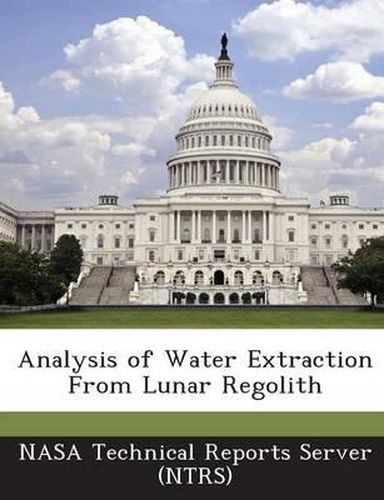Readings Newsletter
Become a Readings Member to make your shopping experience even easier.
Sign in or sign up for free!
You’re not far away from qualifying for FREE standard shipping within Australia
You’ve qualified for FREE standard shipping within Australia
The cart is loading…






Distribution of water concentration on the Moon is currently an area of active research. Recent studies suggest the presence of ice particles, and perhaps even ice blocks and ice-cemented regolith on the Moon. Thermal extraction of the in-situ water is an attractive means of satisfying water requirements for a lunar mission. In this paper, a model is presented to analyze the processes occurring during the heat-up of icy regolith and extraction of the evolved water vapor. The wet regolith is assumed to be present in an initially evacuated and sealed cell which is subsequently heated. The first step of the analysis involves calculating the gradual increase of vapor pressure in the closed cell as the temperature is raised. Then, in the second step, the cell is evacuated to low pressure (e.g., vacuum), allowing the water vapor to leave the cell and be captured. The parameters affecting water vapor pressure build-up and evacuation for the purpose of extracting water from lunar regolith are discussed in the paper. Some comparisons with available experimental measurements are also made.
$9.00 standard shipping within Australia
FREE standard shipping within Australia for orders over $100.00
Express & International shipping calculated at checkout
Distribution of water concentration on the Moon is currently an area of active research. Recent studies suggest the presence of ice particles, and perhaps even ice blocks and ice-cemented regolith on the Moon. Thermal extraction of the in-situ water is an attractive means of satisfying water requirements for a lunar mission. In this paper, a model is presented to analyze the processes occurring during the heat-up of icy regolith and extraction of the evolved water vapor. The wet regolith is assumed to be present in an initially evacuated and sealed cell which is subsequently heated. The first step of the analysis involves calculating the gradual increase of vapor pressure in the closed cell as the temperature is raised. Then, in the second step, the cell is evacuated to low pressure (e.g., vacuum), allowing the water vapor to leave the cell and be captured. The parameters affecting water vapor pressure build-up and evacuation for the purpose of extracting water from lunar regolith are discussed in the paper. Some comparisons with available experimental measurements are also made.